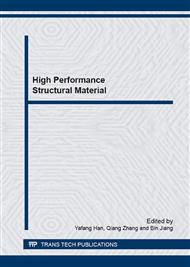p.498
p.504
p.513
p.518
p.523
p.529
p.534
p.540
p.546
Influence of Thermal Exposure on the Microstructure, Surface Stability and Strength of a New Fe-Ni-Base Superalloy for A-USC Applications
Abstract:
A low-cost, high-creep strength wrought Fe‒Ni-base superalloy for 700 °C advanced ultra-supercritical coal-fired power plant applications has been developed. The microstructural stability of this alloy during long-term exposures at 700 °C‒750 °C for up to 10000 h was investigated by SEM and TEM. The correlation between the microstructure evolution and the mechanical properties was studied. The experimental results showed that the major precipitates in the alloy were spherical γ′, MC and discrete M23C6 after the long-term exposure at 700 °C and 750 °C and no harmful phases, such as σ phase and η phase, were observed. The amount of M23C6 increased with exposure time at 700 °C while it decreased at 750 °C. During thermal exposure γ′ coarsened with increasing the exposure time and exposure temperature. Alloy showed good oxidation resistance due to the formation of external layer of Cr2O3. The yield strength of the alloy increased at first and then decreased with increasing exposure time at 700 °C, but it decreased gradually with increasing exposure time at 750 °C. The relationship between yield strength and the dominant deformation mechanisms of the alloy was discussed.
Info:
Periodical:
Pages:
523-528
Citation:
Online since:
April 2015
Authors:
Price:
Сopyright:
© 2015 Trans Tech Publications Ltd. All Rights Reserved
Share:
Citation:


